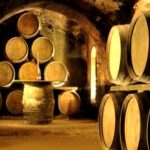Wine labels on the bottle are a visual marketing ploy, but also the main informant for the wine contained in it. Mainly, they are very elegant, artistic and harmoniously designed, but one should know how to interpret the content of the text. They are present as: main label (on the front), informative (on the back), upper, and can be attached separately to the neck of the bottle. Each label, depending on the country of origin, contains all the information about the wine being sold. The information on the label mainly depends on the quality of the wine. The richer the content, the better the wine. Thus, quite simple wines have simple labels which contain: the name of the producer, the colour of the wine, the year of production, the percentage of alcohol, the consistency of the bottle, the country of production and an indication of the quality of the wine.
For each higher quality level there are more information that primarily refers to the producer, wine category, control, grape variety, brand name of the wine, trademark of the wine, wine-producing region, level of alcohol, amount of undiluted sugar, volume, year of harvest and country of production. If wines of geographical origin have been aged in oak barrels, they have the label Barrique, and if they have aged longer in a cistern, they have the label Cuvee, the wines of organic production have the label Eco.
There are wines from micro-regions or from individual islands, which are labelled as such, while wines from limited editions contain data on the number of sealed bottles. If it is from a late harvest or from selected grape, the label contains that data as well. Information about the edition, the colour, the way of production, the blend of varieties, if the wine is a mixture, awards and recognitions are optional. They must all be on the main label, except for the year of production, which may be contained on the neck or top label. The visual creation of the label is most often a matter of taste or artistic impression with a choice of colours and designs, illustrations and photographs of a gallant type. In Macedonia, special attention on this part is paid by Bovin, Skovin and Tikvesh. Bovin’s labels are characterized with national simplicity and universal messaging suitable for export to 35 countries around the world. Some wineries have labels with trivial or grotesque content in order to attract attention. Labels from special editions and sparkling wines are similar, but drastically more elegantly designed than those of still wines. Exhibitions on this topic are often organized at large wine gatherings.
The ordinary wine classification on the label recognizes three categories: still (conventional), sparkling (champagne) and special or dessert wine (port, sherry, proshek). By colour, they are divided to: white, red, rosé and orange (amber) wine.
According to the amount of unfermented sugar, we divide them into: dry (low sugar percentage of up to 4 grams per litre), semi-dry (up to 12 grams per litre), semi-sweet (up to 50 grams per litre) and sweet wines (over 50 grams per litre).
Each country has its own legislation, rulebook, specific designations and terminology. Here are some of them:
Spain – Vino de mesa;
– Table wine of marked origin: France – Vin de pays, Italy – IGT, Spain – Vino dela tierra;
Quality wine – wine with controlled geographical origin: France – AC – Apppellation controlee, Italy – DOC – Table wine: France – Vin de table, Italy – Vino di tavola,
Denominazione di Origine Controllata, Spain – DO – Denominacion de Origen;
– Fine wine: France – VDQS, Italy – DOCG, Spain – DOCa, Portugal – IPR, Germany – QmP.
Some labels are specific only to certain countries, such as: Bin – Australian label for limited edition, Classico, Classico Superior – Italian label for the best part of the harvest, Cru, Grand Cru – French label for wine from the best region, Reserva, Gran Reserva – Spanish aged red wine, Riserva – Italian label for aged wines.
When buying wine, however, the personal affinity decides. Cheap wine is usually of poor quality. Expensive wine is mostly of better quality, but it does not always justify the price. Therefore, read the labels carefully before deciding which wine to buy, still the letters were invented by very smart people, right?






















